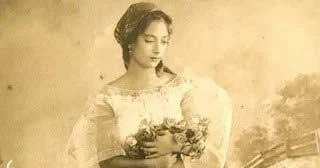Teodoro M. Kalaw’s Version of Juanang Ilaya and other 19th Century Scare Stories Told to Children
[In this article: TM Kalaw, Teodoro M Kalaw, Lipa Batangas, Batangas Province, Batangas folklore, Juanang Ilaya, tigbalang, nuno sa punso, ililipad sa Makulot, iki, aswang, asuang, tiyanak, patianak]
The folkloric story of Juanang Ilayaw was already discussed in a previous article on Batangas History, which was based on an ethnographic paper written by one Amparo Reyes in 19251. In this version, Juanang Ilaya was a beauteous but heartbroken woman in the then-town of Lipa who would become a recluse and, for some unexplained reason, become transformed into a witch.
There was, however, an earlier version told late during the Spanish colonial era, but this time Juanang Ilaya was not a witch at all but another elemental creature of Batangueño folklore. The version was told by Teodoro M. Kalaw, the Lipeño who would distinguish himself and later be remembered as the “Father of Philippine Libraries,” in his autobiography serialized in the Philippine Magazine in 19382.
READ:
“The Story of Juanang Ilaya, Supposedly a Legend Started in Lipa Town”
“TM Kalaw: Knowing the Batangueño of the Common Street Name”
“…a beautiful Tigbalang (variant of tikbalang), who had long black hair and a red, red skirt. She, incidentally, had her haunts near our farm at Balintiowak (Balintawak?). On that farm, there was a dense tangle of wood where two great branches of gogo4 tree wound grotesquely upward. They were so unusually large and thick that they astonished all who saw them. On clear moonlit nights, I was told, Juanang Ilaya in her red dress would sit carefully balancing herself on these branches and would loosen her long black hair over her shoulders.”
The story of Juanang Ilaya was not the only folkloric tale told to children in the late 19th century. Kalaw talked about a “book of horrors” that his nursemaid used to read to him when he was a young boy, which impressed and affected him to much because of the ghastly pictures that they contained.
Among the other creatures that he described were the patianak5, iki and asuang (variant spelling, aswang), which he said “were creatures which flew at night much like the witches do, and entered houses where there were sick little children and pulled the livers out of their bodies.”
Then there were the nunos,, which Kalaw said were “aged (likely old) dwarfs with long white beards, who squatted over mounds of dark red earth, looking after travelers who had lost their way.” Kalaw’s visual description of the nuno’s appearance may be similar to how most Filipinos envision the creature to be.
However, that it “looked after travelers who had lost their way” may be new to some since the nuno is often thought of as the creature who inflicted punishment if one unwittingly stepped on it or its territory (the mound of earth) or urinated near it without excusing himself first with tabi po nuno.
Finally, Kalaw gave the insight that the ililipad sa Makulot story was something that was told to children as early as the Spanish times, and likely even earlier. He wrote: “I was also told of the Makulot Mountain, near the town of Cuenca, where naughty children who would not have the lice removed from their hair were transported to.”
2 “The Decline of Lipa,” by Teodoro M. Kalaw, Translated from Spanish by Maria Kalaw Katigbak, published October 1938 in the Philippine Magazine, online at the Internet Archive.
3 “Tikbalang,” Wikipedia.
4 Pronounced goo-goo or gugu in Tagalog, for which the “o” and hard “u” sounds can be interchangeable conversationally. The “gogo” tree is also known as the “St. Thomas Bean.” Online at the Philippine Medicinal Plants.
4 The patianak (variant patianac) was said to be spirits of unborn children. The name itself was said to have been corrupted from “patay anak” or dead child. The creature may also be referred to as the tiyanak What is curious about Kalaw’s description of this creature is that most Filipinos will probably not think of the tiyanak as a “flying creature.”

